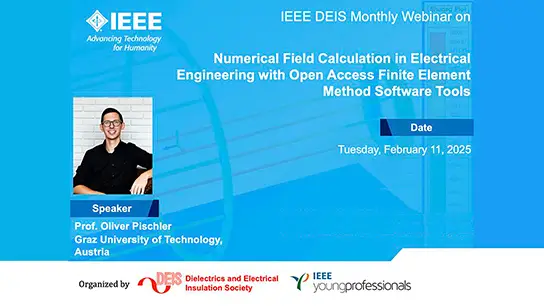-
Members: FreePES
IEEE Members: $25.00
Non-members: $40.00Pages/Slides: 23
This panel session contains the following presentations:
1. Characteristic Analysis and Optimization Strategy of Transformer Vibration Signal
Transformer on-line monitoring based on vibration analysis method evaluates the mechanical stability of transformer through body vibration signal, which effectively overcomes the shortcomings of electrical performance monitoring and has attracted more and more attention. Although the existing literature has studied the vibration analysis method from the aspects of time domain, frequency domain and time-frequency domain characteristics, it often ignores the differences and connections between various characteristics, and does not comprehensively and effectively extract the vibration signal features, which may lose some important features, or the discrimination between some feature parameters is small, which makes little contribution to transformer condition assessment, When used for transformer condition evaluation, it may also lead to poor evaluation effect and other problems. Therefore, this paper first deduces the relationship between winding vibration and current and the relationship between iron core vibration and voltage, and analyzes the relationship between body vibration and winding and iron core vibration according to the principle of vector synthesis. Secondly, through the methods of general statistical characteristics and distribution characteristics, Fourier transform and wavelet packet transform, the characteristics of the measured signal are analyzed, the differences of various characteristic parameters are compared, and the characteristic parameters with large discrimination and conducive to transformer condition evaluation are selected, so as to lay a transformer foundation for evaluating the mechanical stability of transformer. Then, through the optimal transformer vibration characteristics, a transformer state evaluation algorithm for vibration stability is formed, which is used to comprehensively analyze the correlation between relevant indexes and characteristics. Finally, the experimental platform is built to verify the rationality and effectiveness of this method and the selection of characteristic parameters.
2. Study on Commutation Failure and Its Prevention Strategy in ±1100kV UHVDC
Commutation failure is normal fault of line-commutated converters at the inverter stations. With the development and wide application of UHVDC transmission technology, the DC voltage and transmission capacity have been continuously improved, and the interaction between AC and DC system has been aggravating, so the effect of commutation failure on the AC/DC system has become increasingly prominent. With the increase of DC transmission distance, the coupling effect between bipolar DC lines becomes more and more serious, when one pole has a DC line fault? a commutation failure of the other pole may be caused on. The electromagnetic induction characteristics between bipolar transmission lines are analyzed?and the measure of improved extinction angle controller combining with DC voltage mutation is proposed in this paper. According to the characteristics of inducting DC current and DC voltage of non-fault pole, the extinction angle controller is improved in this measure based on the characteristics of bipolar line coupling effect. At the same time, by discriminating the fault pole with the DC voltage mutation index and compensating the extinction angle, the commutation failure of non-fault pole can be avoided. The effectiveness and adaptability of the proposed measure are verified by the electromagnetic transient model, which has been applied in the ±1100kV UHVDC project.


